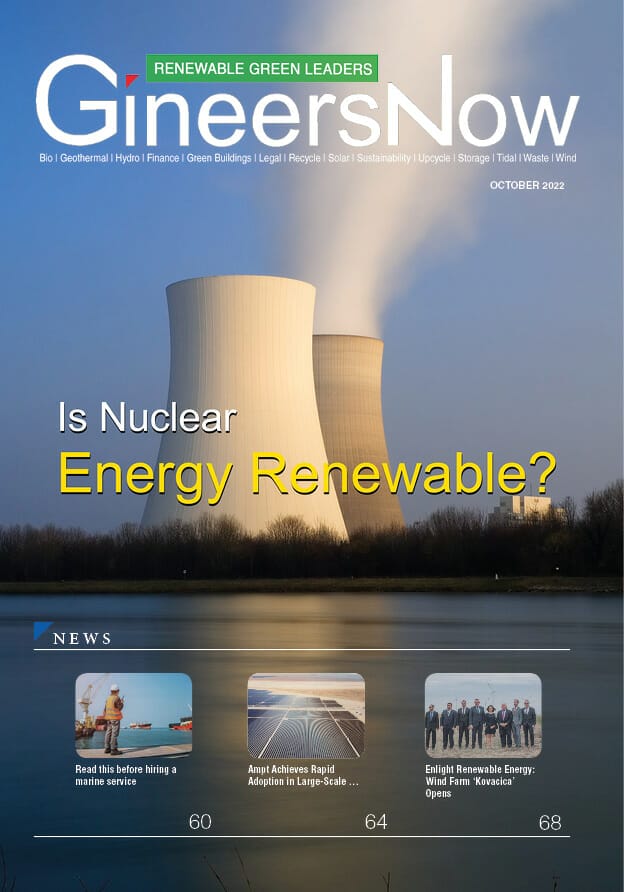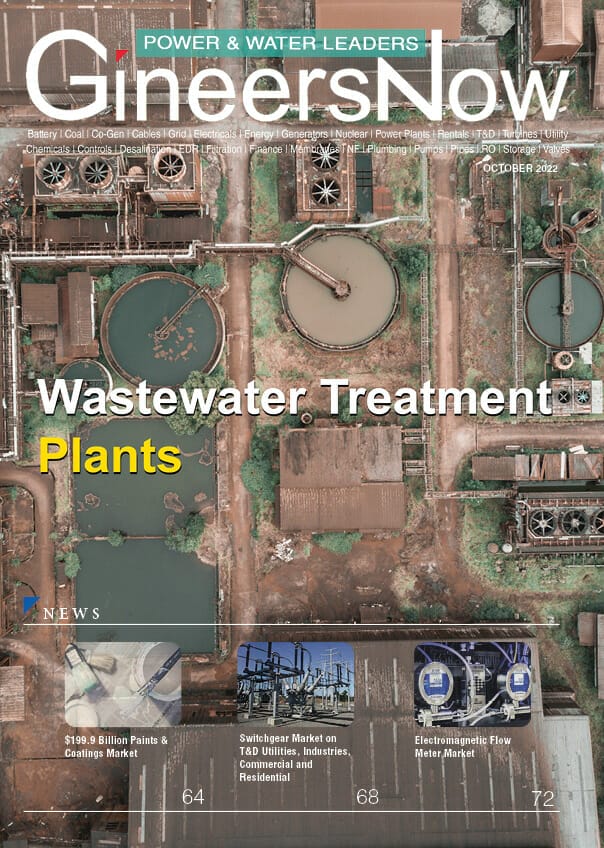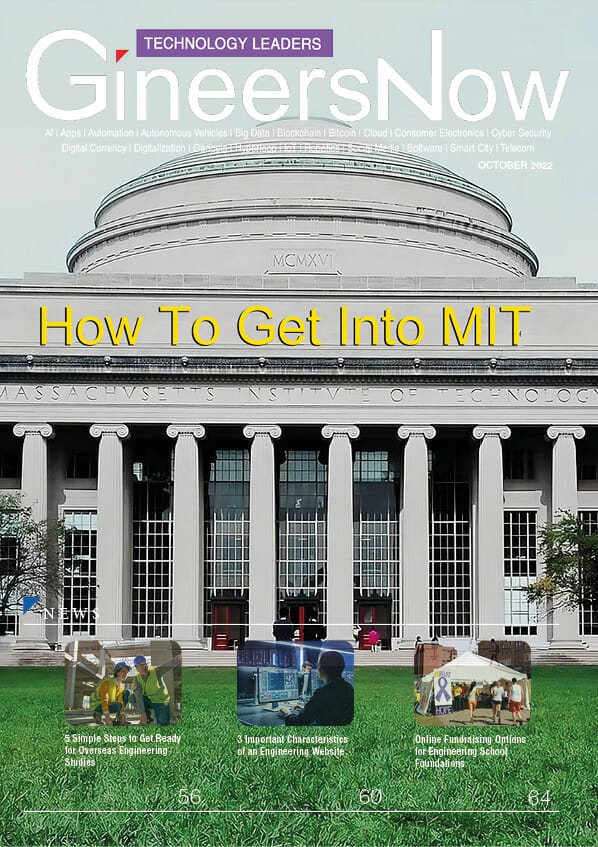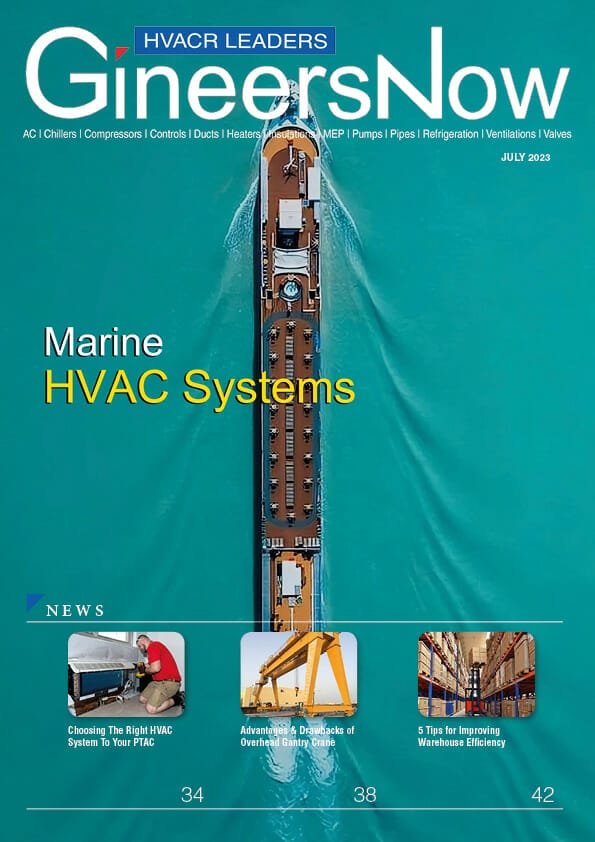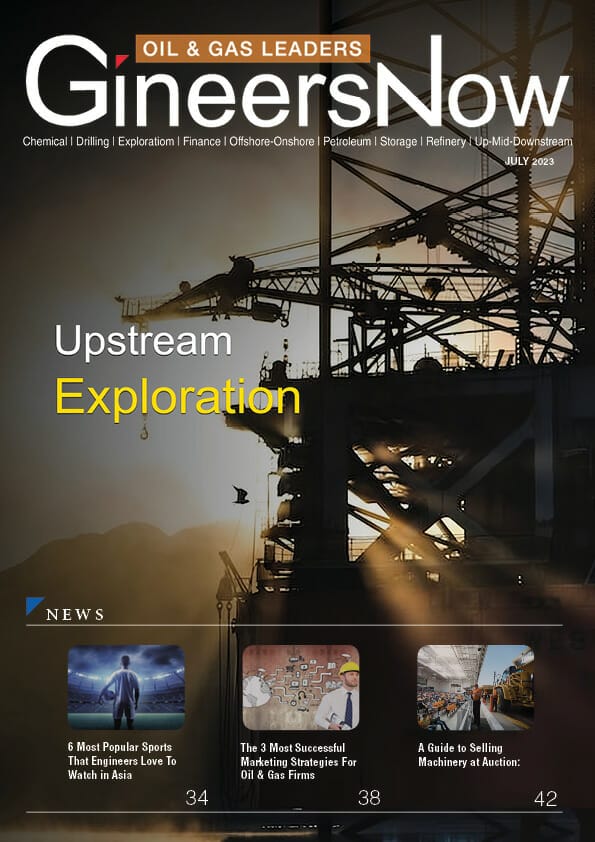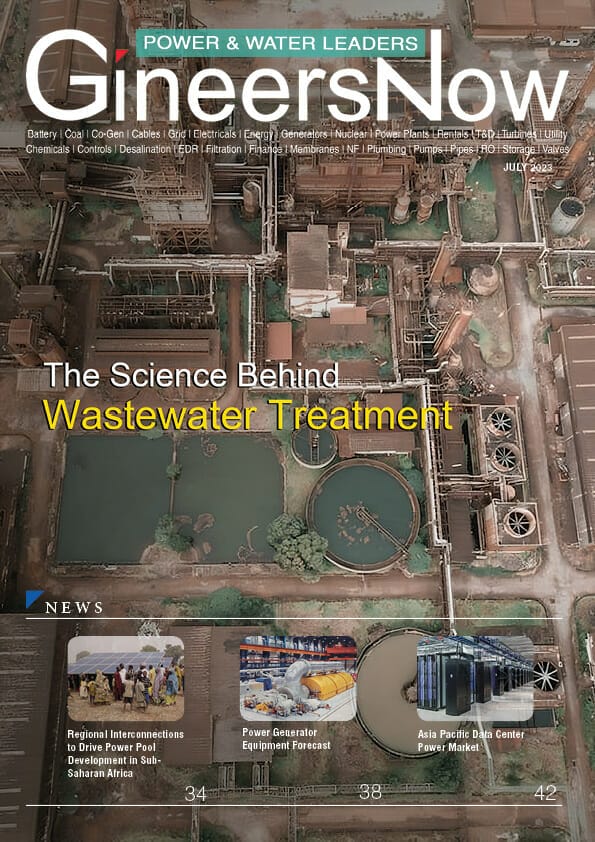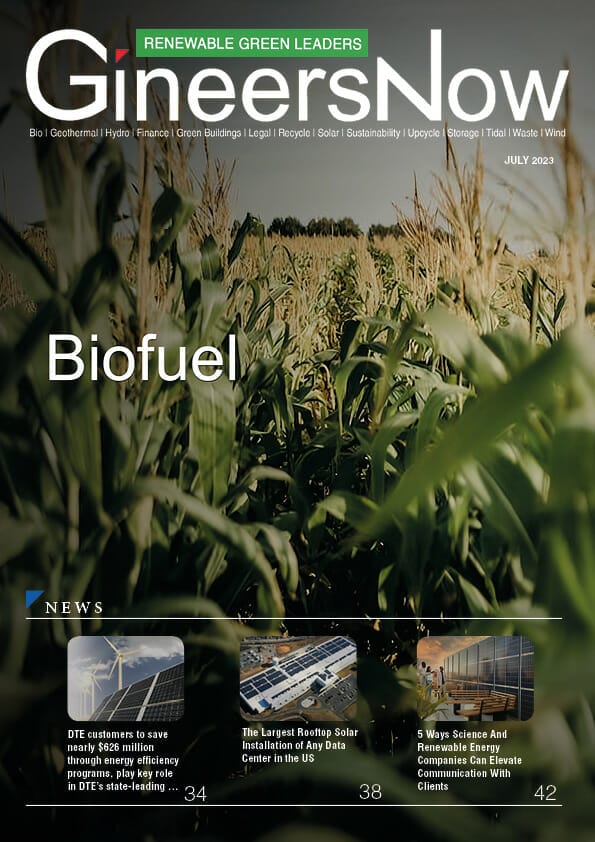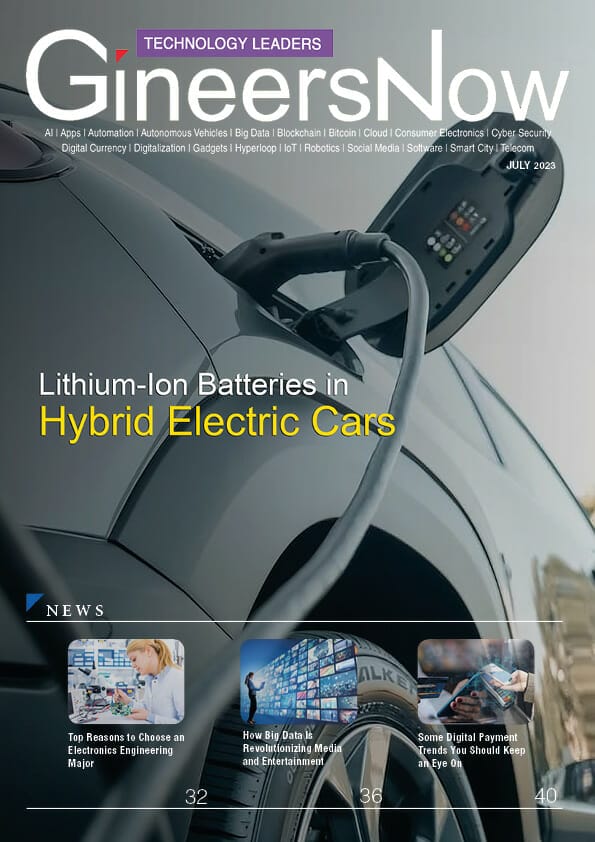Here’s a million-dollar question: Is nuclear energy renewable? Nuclear energy is a renewable energy source that can help reduce the effects of climate change. Many research suggests that nuclear power is renewable. Some say nuclear energy is not viable for a clean energy transition. What is the truth about nuclear’s energy production? In this article, we will explore how nuclear power plants work and whether or not they are renewable.
What is Nuclear Energy?
Nuclear energy is a type of renewable energy that uses the power of the atom. It is one of the most effective ways to generate electricity, and it has the potential to provide a long-term, low-cost source of energy. Existing nuclear reactors use uranium to create heat and electricity.
The heat can be used to create steam, which turns turbines and produces electricity. The uranium atoms are split into smaller pieces by neutrons, creating energy that can be used to power devices like lights and cars. Nuclear reactors are safe when operated properly, but they can also produce radioactive waste if they are not handled properly.
Nuclear energy is one of the cleanest sources of power available today because it does not produce greenhouse gases like carbon dioxide when it is used. However, is nuclear energy renewable and safe for the environment? This article will answer that question.
What is a Nuclear Power Plant? How Do Nuclear Power Plants Work?
Nuclear power plants are large, complex machines that use nuclear energy to produce electricity. Nuclear power plants use uranium to create heat and energy. This heat is used to turn a generator that creates electricity. The generator uses water as a coolant, which is then released into the environment.
There are three types of nuclear reactors: pressurized water reactors (PWRs), boiling water reactors (BWRs), and light water reactors (LWRs). PWRs use pressurized water to turn the uranium into heat and energy. BWRs boil water in a pressure vessel before it goes into the reactor. LWRs use light water instead of heavy water and don’t have pressure vessels.
Nuclear power plants have many safety features that protect people and the environment from radiation exposure. These features include emergency shutdown buttons, firewalls, cooling systems, surveillance cameras, and redundant systems. However, is nuclear energy renewable and eco-friendly? This article will answer that question.

How Does Nuclear Energy Produce Electricity?
Nuclear energy is produced by splitting atoms in the nucleus of an atom. This process creates energy that can be used to power devices. The different ways nuclear energy is used include generating electricity, making weapons, and providing heat for homes and businesses.
Is Nuclear Energy Renewable?
Nuclear energy has been around for over 60 years and remains one of the most reliable energy sources. However, is nuclear energy renewable and safe for the environment?
Many researchers from international organizations and scholars claim that nuclear energy is considered a renewable energy source. It is clean, emissions-free, and produces no waste. Nuclear power plants can generate a high amount of electricity without emitting harmful pollutants into the atmosphere. Critics of nuclear energy argue that it is not renewable and that it will eventually run out. However, there are plans in place to build more nuclear power plants to meet the increasing energy demand.

Here are the four reasons why nuclear energy is sustainable.
1. Nuclear energy is renewable because it protects air quality
Nuclear energy is one of the most environmentally friendly forms of renewable energy. It protects air quality by releasing negligible levels of harmful pollutants into the atmosphere. Additionally, the safe storage and disposal of nuclear waste is a critical factor in ensuring that this form of energy remains sustainable.
Nuclear energy has the potential to be a sustainable source of energy because it does not produce greenhouse gas emissions. Nuclear reactors use uranium, a radioactive element, to create energy. The waste from nuclear reactors is also relatively benign and can be disposed of safely.
2. Nuclear energy is renewable because it has a small land footprint, unlike other renewable energy sources
Nuclear power occupies a small piece of land and produces about 10% of the world’s electricity, and it has been very important in providing reliable, affordable power during times of crisis. The 440 nuclear reactors operating in various countries provide about one-fifth of the world’s installed capacity for generating electricity from renewable sources. Solar, wind, geothermal and hydroelectric clean energy sources combined power to account for about three-quarters of global renewable energy capacity and occupies a large plot of land. Nuclear energy provides about 70% of France’s total electricity needs, 32% of Finland’s needs, and 40% of Sweden’s needs.
3. Nuclear energy is renewable because it produces less waste
Nuclear energy is a type of renewable energy that produces minimal waste. Unlike other forms of renewable energy, such as solar or wind, nuclear plants do not require regular maintenance and can run for many years without shutting down. This makes nuclear energy an attractive option for countries that are looking to reduce their reliance on foreign oil.
4. Nuclear energy is renewable because of its low fuel consumption
Nuclear energy has been around for many years and has a long history of being used to generate electricity. Nuclear reactors use uranium to create heat and electricity. This process is very efficient, with a fuel consumption rate that is about one-tenth that of coal or oil.
Nuclear energy is renewable because it does not produce greenhouse gas emissions, which are a major contributor to climate change. Nuclear energy is also a reliable energy source, with low fuel costs and minimal environmental impact.
Is Nuclear Energy Sustainable?
Nuclear energy has been a part of the world’s energy landscape for over 60 years. Nuclear power plants produce electricity by fissioning heavy elements like uranium into lighter ones like plutonium. This process creates heat and steam, which are used to turn turbines and generate power.
Nuclear power plants have several potential benefits that make them an attractive option for the future: they emit no greenhouse gases, they are reliable and efficient, they have low construction costs, and they can provide baseload power to meet demand. However, nuclear energy also has many potential drawbacks that make it less sustainable than other forms of energy:
- Radioactive waste remains hazardous for centuries.
- Accidents can cause widespread environmental damage
- Nuclear weapons proliferation is a risk.
The global nuclear industry is currently facing challenges from both economic slowdown and new safety concerns about reactors in Japan and elsewhere. While it is still an important part of the global energy mix, nuclear energy may not be sustainable in the long run.

What is Hybrid Energy System in Sustainable Energy?
Hybrid Energy Systems (HES) are a type of sustainable energy system that uses both renewable and non-renewable resources to produce electricity. A hybrid energy system typically combines solar, wind, natural gas, geothermal, hydroelectric, thermal energy, and nuclear power sources.
The benefits of using a hybrid renewable energy resources include using multiple sources of low-carbon energy to meet demand, reducing environmental impact, and the potential for cost savings. However, is nuclear energy renewable and safe for the environment? This article will try to elaborate more on that question.
The Impact of Nuclear Energy on Our Environment?
Nuclear energy has been in use since the early days of the Atomic Age. It is a clean, renewable energy source that can provide power for decades without emitting any harmful pollutants. However, there are some concerns about the safety of nuclear energy and its effect on the environment.
The biggest concern with nuclear energy is radiation. Nuclear reactors produce radioactive materials that must be stored and handled properly to prevent them from escaping and causing harm to people and the environment. Radiological accidents can release dangerous radiation levels into the environment, contaminating water supplies, damaging crops, and even killing wildlife. Even small amounts of radiation can cause health problems in humans, which is why it is important to take precautions when dealing with radioactive material.
Another concern with nuclear energy is its impact on climate change. Coal and oil are two fossil fuels that release greenhouse gases into the atmosphere when they are burned. Burning nuclear fuel instead of these other sources of energy causes less pollution, but it also creates waste that must be stored for hundreds or even thousands of years. If we want to keep Earth’s temperature below 2 degrees Celsius (3.6 degrees Fahrenheit), we need to find ways to reduce our greenhouse gas emissions.

What is a Nuclear Reactor?
Nuclear reactors are an important part of our energy grid because they produce clean, sustainable energy. Nuclear reactors are a type of energy plant that uses the power of the atom to create heat and electricity. Nuclear reactors are made up of three main parts: the reactor core, the containment structure, and the cooling system. The reactor core contains uranium pellets that heat up until they reach a very high temperature. This heat turns water into steam, which powers turbines to create electricity. The containment structure keeps the nuclear reactor safe from radiation and outside elements, while the cooling system ensures that the nuclear reaction does not get out of control. However, is nuclear energy renewable and safe for the environment? This article will try to elaborate more on that question.
Is Nuclear Reactor Safe and Sustainable?
Nuclear reactors are a safe and sustainable way to generate electricity. They use nuclear fuel to create heat and energy, which can be used to power homes and businesses. Nuclear reactors are also a reliable source of energy because they produce stable, clean energy, less or without the emissions that come from other sources.

Why are Environmentalists Protesting Against Nuclear Energy?
Environmentalists are protesting against nuclear energy because they believe it to be an environmentally harmful technology. They cite the dangers of radioactive waste, the risk of accidents, and the lack of a permanent solution to energy needs as reasons why nuclear shouldn’t be used. Others argue that nuclear power is necessary to meet future global energy demands and that renewable sources like solar and wind are not capable of providing enough energy on their own. The debate over the use of nuclear energy will continue for years to come, but one thing is for sure: it’s an issue that environmentalists will continue to fight against.
How Do Nuclear Power Plants Take Care of Radioactive Wastes
Nuclear power plants have several systems in place to take care of radioactive wastes. First, the plant must store the waste in a safe and secure location until it can be disposed of. Second, the plant must use radiation protection measures to keep workers and the public safe. Finally, the plant must decommission and dispose of the radioactive waste.
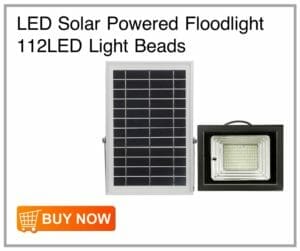
What is Nuclear Fission in Nuclear Power Plant?
Nuclear fusion is the natural nuclear reaction that powers the sun and stars. Nuclear fission happens when heavy atomic nuclei are smashed together, splitting them into two or more lighter pieces. In a nuclear power plant, nuclear fission creates heat energy that can be used to turn turbines and generate electricity. Nuclear fusion is the key to harnessing the massive energy potential of the sun and stars, but it’s still only in its infancy as a sustainable source of power. However, is nuclear energy renewable and environmentally friendly? This article will try to elaborate more on that question. So read on.
Is Nuclear Fission Dangerous?
When atoms are split apart by the heat of an atomic nucleus, it creates energy. The process called nuclear fission, and this release of energy is used to generate electricity and heat and has been used to power reactors since the 1940s.
There are many concerns about nuclear fission, but the most important ones relate to safety. The process can create enormous amounts of heat and radiation, which could potentially harm people and the environment. There have also been many accidents during nuclear fission processes, including the Chernobyl disaster in 1986.

Are Nuclear Energy Produce Emissions?
Nuclear energy is a type of renewable energy that uses the power of the atom. This power can create electricity, heat, or even weapons. Nuclear energy is considered renewable because it can be reused or recycled. However, nuclear energy production does produce emissions. These emissions can come from the plant itself or the materials used to create it.
Nuclear Energy Efficiency vs. Other Renewable Sources’ Energy Production
Nuclear energy plants are very efficient when it comes to generating electricity for the power grid. It has low waste output and produces fewer emissions, making it a viable option for environmentally-conscious consumers. However, is nuclear energy renewable and environmentally friendly? This article will try to dig deeper pertaining to that question. So keep reading.
Nuclear energy is one of the most efficient ways to produce energy. For every dollar you spend on a nuclear plant, you get about seventy-five cents back in electricity production. Coal, natural gas-fired power plants, and oil all have higher operating costs than nuclear energy. However, coal and oil are more environmentally hazardous than nuclear power’s reactors because they produce emissions like carbon dioxide and nitrogen oxides that contribute to climate change.

Can We Produce Energy Without Emission or Low-Carbon? Is Nuclear Renewable Energy the Answer for Low-Carbon Emission?
Renewable energy sources such as solar and wind have been growing in popularity, but they come with their own set of challenges. Solar energy is intermittent and can be unreliable in certain parts of the world, while wind power can be slow to ramp up and requires a large area to be effective.
Nuclear energy has been touted as a potential solution for low-carbon energy emissions, but there are concerns about its safety and environmental impact. A 2021 study by the IAEA energy agency found that nuclear power could provide up to 12% of global electricity by 2050 if done carefully – but only if there are no major disruptions to the supply chain or global economy.
Why Should We Use Nuclear Renewable Energy?
Renewable energy technologies are growing in popularity due to their environmental benefits. Nuclear renewable energy is a type of renewable energy that uses nuclear power to produce electricity. Existing nuclear power plants use nuclear reactors to generate electricity. However, is nuclear energy renewable and safe for people? This article will try to elaborate more on that question. So read on.
Nuclear reactors use nuclear fuel rods to create heat and electricity. The heat from the reactor melts the uranium in the fuel rod, and this creates steam which powers the turbines and generators. A nuclear plant produces more clean energy than a regular power plant because it does not produce greenhouse gases like carbon dioxide. This makes nuclear renewable energy an important part of our carbon-free future.

What Are The Risks Of Using Nuclear Energy?
Nuclear energy is a renewable energy source that has been used for decades, but it has some risks. The first risk is that nuclear accidents can happen and cause major problems. The second risk is that nuclear energy is very expensive to use, and it doesn’t always produce the same amount of energy as other types of clean energy sources.
Who Opposes Using Nuclear Energy?
Nuclear energy is a controversial topic. Many people oppose its use because of the dangers it poses, while others believe that it has the potential to be a clean and renewable source of energy. There are many different opinions on the subject, so it is difficult to develop a specific group that is completely against nuclear energy. However, some groups that are particularly opposed to nuclear energy include environmental activists and those who are concerned about nuclear weapons proliferation.

The Pros and Cons of Nuclear Energy
What are the advantages of nuclear energy?
Nuclear energy has many advantages over other forms of renewable energy. Nuclear energy is the most reliable source of electricity, with a low chance of causing an accident. It is also the cleanest form of energy, producing no air pollution or greenhouse gases.
Nuclear energy is a renewable source of energy that has been used for decades. It has many advantages, including its low emissions, high efficiency, and long life. Nuclear energy is also a safe energy source and can provide power for a long time without needing to be replaced.
Another benefit of nuclear energy is that it is relatively cheap to produce. The upfront costs of constructing a nuclear plant are typically much lower than those of other types of renewable energy projects. This makes nuclear power an attractive option for countries looking to shift away from fossil fuels and toward more sustainable forms of energy.
What are the disadvantages of nuclear energy?
Nuclear energy is a potential replacement for fossil fuels, but it has several disadvantages.
The first disadvantage is that the role of nuclear reactors in finance is very expensive. It is costly to build and maintain.
Second, even when the reactors are functioning properly, they produce radioactive waste that must be carefully stored and handled. Nuclear waste management is crucial to properly managing nuclear waste disposal.
Third, there is the risk of a nuclear accident, which could release large amounts of radiation into the environment.
Finally, nuclear energy is not renewable- meaning that it will eventually run out if we use it consistently at its current rate.
Nuclear energy has the potential to provide a sustainable, environmentally friendly source of energy. However, there are still many safety concerns that need to be addressed before nuclear power can be considered a viable option for the future.
One of the biggest safety concerns with nuclear power production is the risk of a meltdown. A meltdown refers to an accident in which radiation and heat cause a nuclear reactor to become unstable and potentially release dangerous amounts of radiation. A meltdown could result in significant economic losses and human casualties.
Despite these precautions, accidents do occur – most notably at the Chernobyl nuclear plant in Ukraine in 1986. This disaster resulted in the release of large amounts of radiation into the environment, which caused widespread illness and death among residents nearby. In recent news, what if Vladimir Putin decided to attack Ukraine’s nuclear power plant?

Nuclear Technology Improvement
Nuclear technology has been in use for over 60 years and has had several ups and downs. However, recent advanced nuclear technology may help to improve its reliability and safety.
For example, new reactor designs have improved safety by reducing the likelihood of accidents, and new nuclear materials have increased the power output of reactors without increasing their cost.
Additionally, advances in computing and engineering are allowing for more efficient operations of nuclear plants. Overall, nuclear technology is improving, but there is still room for improvement.
What are the Common Energy Systems in Renewable Energy?
Renewable energy is a term used to describe low-carbon power sources that are not based on using resources that can be depleted, such as fossil fuels. Variable renewable energy systems include solar, wind, geothermal, hydroelectric, and even biomass.
Renewable and sustainable energy has been around for a long time, and it has been proven to be reliable and sustainable compared to other fossil fuel power plants. It provides more sustainable energy than traditional coal power plants In fact, many renewable energy systems are becoming more affordable as technology improves. There are many different types of renewable energy systems, but they all have some things in common. They all require resources that can be regenerated or recycled so they can be used again.
One of the biggest challenges facing renewable energy is getting everyone on board with the idea of using alternative forms of energy. Many people are resistant to change, and they may not see the benefits right away. It will take some time, but eventually, everyone will be using renewable energy sources in some way or another.

What is a Nuclear-Renewable Hybrid Energy System?
A nuclear-renewable hybrid energy system (NHRES) is a type of commercial nuclear energy system that integrates nuclear power reactors with renewable energy sources, such as solar, wind, and hydropower. The benefits of an NHRES are that it can achieve high levels of reliability and flexibility. An NHRES can also help reduce greenhouse gas emissions by utilizing multiple renewable energy sources.
Nuclear Energy vs. Solar
Nuclear energy is often seen as a cleaner, more sustainable option than solar energy. While nuclear energy does produce some greenhouse gases, it produces far less than solar power. Solar panels also require regular maintenance, while nuclear plants are usually considered safe and reliable. However, the costs of installing and operating a nuclear plant can be high.
What Does Clean Energy Mean?
Clean energy systems refer to energy sources that can be regenerated or reproduced without destroying or damaging the environment. These include nuclear and renewable sources like solar, wind, geothermal energy, hydroelectric, and tidal power. Renewable energy has the potential to reduce greenhouse gas emissions by replacing fossil fuels such as coal and oil.

Investment in Renewable Energy
Renewable energy has been gaining a lot of attention in recent years as the world tries to find ways to reduce emissions. Investment in renewable energy has been growing, both in terms of capital and technology.
There are many different types of renewable energy sources, including solar, wind, biomass, and geothermal. Solar power is by far the most popular form of renewable energy, with installations growing by more than 60% each year. Wind power also continues to grow rapidly, with installations reaching new heights each year. However, biomass and geothermal have also seen a surge in investment recently due to their potential for providing a completely clean energy supply without adding to global warming.
There are a number of reasons why investors are interested in investing in renewable energy sources.
First and foremost, these sources are environmentally friendly—they don’t produce greenhouse gases that contribute to climate change.
Secondly, renewables provide reliable and consistent electricity power generation, unlike some other forms of energy generation, such as oil or gas, which can be volatile and unpredictable.
Finally, renewables tend to be cheaper than traditional forms of energy, making them attractive energy options for businesses and households who want to reduce their carbon footprint.

How Much Does It Cost To Build A Nuclear Power Plant?
Nuclear power plants are expensive to build and operate. The cost of a nuclear power plant can vary depending on the type of plant, the location, and the size. A typical nuclear power plant can cost upwards of $10 billion dollars to build. Once operational, a nuclear power plant typically requires between $2 billion and $4 billion dollars per year in maintenance costs.
Renewable energy nuclear, also known as nuclear fusion, is a type of energy that comes from using the sun’s energy to create heat and create an atomic nucleus. Nuclear fusion is what powers the sun and stars. Nuclear fusion is much more expensive to build than other types of renewable energies, but it has the potential to be much more clean and efficient than other forms of energy.
Should Government Start Investing in Renewable Nuclear Energy?
Renewable energy is a growing industry, and there are many different types of renewable energy. Nuclear energy is one type of renewable energy that has been around for a long time, and it has many benefits. A nuclear power plant uses nuclear reactors to produce electricity. Nuclear reactors are very safe, and they produce very little noise. They also have a very short lifespan, so they need to be replaced fairly often. The cost of building a nuclear power plant is usually high, but the benefits make it worth it. Government should start investing in renewable nuclear energy if they want to reduce their greenhouse gas emissions.

How Can We Make Nuclear Energy Safer?
We can improve safety by building better containment structures around reactors and ensuring that they are always operating at full nuclear capacity.
To reduce the risk of a meltdown, nuclear plants must be equipped with numerous safety systems, including automatic shutdowns and emergency cooling systems.
In addition, operators must constantly monitor plant conditions and make any necessary adjustments to ensure stability.
The Future of Nuclear Renewable Energy
Nuclear renewable energy is a rapidly growing field with considerable potential. Nuclear energy has the renewable capacity to produce large amounts of clean, stable energy that is not subject to the fluctuations of weather. It also has a low carbon energy emission profile, making it an ideal option for carbon-free electricity generation.
However, there are several challenges that need to be addressed before nuclear renewable energy can become a mainstream source of power. One major challenge is that nuclear technology is aging and requires significant investment in new reactors and infrastructure.
Another challenge is the cost of financing nuclear projects, which can be high compared to other forms of renewable energy. However, with a concerted effort from government agencies, industry players, and consumers, nuclear renewable energy could play an important role in meeting our future needs for clean and reliable electricity.

Conclusion: Is Nuclear Energy Renewable or Nonrenewable?
So, is nuclear energy renewable or nonrenewable? On the whole, experts believe that nuclear energy is a renewable resource. Nuclear power plants use natural uranium to generate electricity, and the uranium can be extracted again from the plant’s waste products. The problem is that this process is not 100% efficient, so a small percentage of the uranium is lost each time it’s used.
Although there are some risks involved with using nuclear energy, it could be a great way to combat climate change.
Read GineersNow Renewable Energy Magazine for FREE
Editor’s Note: Is nuclear energy renewable or nonrenewable?
Nuclear power is a much-debated topic. Some people believe that nuclear energy is renewable, while others argue that it is not. In this article, we will explore both sides of the argument to help you come to your own conclusion.
Nuclear power is often thought of as a non-renewable source of energy, but is it? The answer is a bit complicated. Nuclear power comes from the energy released by atoms as they split apart, or fission. This process releases a lot of heat and energy, which can be used to generate electricity. The problem is that the fuel for this process, uranium, is a limited resource. Once it’s gone, it’s gone.
Is Nuclear Energy Renewable? Answer from Pro Nuclear
Nuclear power is a type of energy that is produced by the fission, or splitting, of atoms. Nuclear power is considered a renewable resource because it can be produced without using fossil fuels, and it emits no greenhouse gases.
Nuclear power plants work by using nuclear fission to generate heat, which is then used to produce steam. The steam turns turbines, which generates electricity. Nuclear power plants can generate large amounts of electricity with very little pollution.
However, there are some drawbacks to nuclear power. Nuclear waste is highly radioactive and must be carefully disposed of. There is also the potential for accidents at nuclear power plants, which could release harmful radiation into the environment.
Is Nuclear Fission Renewable? Answer from Anti-Nuclear
Nuclear fission is not a renewable energy source. It is not sustainable because it relies on finite resources, like uranium. Once the uranium is gone, we can’t keep using nuclear fission to generate power.
That said, nuclear fission isn’t really that bad for the environment. The emissions from nuclear plants are very low, especially when compared to other forms of energy generation like coal. So while it’s not renewable, it’s still a relatively clean energy source.

So What is the Right Answer? Is Nuclear Energy Renewable or Nonrenewable?
Read GineersNow Renewable Green Leaders’ magazine to find out.
Click below to read the magazine: Is nuclear energy renewable?
Click here to download the magazine: Is nuclear energy renewable or nonrenewable?
Click here to read on Yumpu: Is nuclear energy renewable or nonrenewable?


